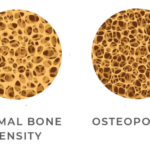The Uric Acid Trap: Don’t Drop Your Thinking Hat the Moment You See High Uric Acid Levels
As a rheumatologist, I often see patients put on uric acid-lowering medicines (febuxostat/allopurinol) for no good reason. In fact, I stop these medicines more often than I prescribe them! The habit of blaming uric acid for any musculoskeletal pain, without proper evidence, is a widespread issue in clinical practice.
A Case in Point
Today, I saw a 25-year-old woman with muscle aches, mainly in her lower limbs. She had recently taken up dancing as a hobby, practicing for an hour daily. Her symptoms were clearly due to exercise-related muscle soreness, yet she was put on the wrong treatment.
She first visited a senior orthopedic doctor, who ordered multiple tests, including uric acid. Her level was 5.9 mg/dL—just slightly above the lab’s upper limit of 5.7 mg/dL. Based on this minor elevation, she was prescribed febuxostat for 15 days. No surprise—her symptoms didn’t improve, so she came for another opinion.
This is a classic example of how misconceptions around uric acid and gout lead to unnecessary treatment.
Where Did the Thinking Go Wrong?
- Uric Acid ≠ Gout
Just because uric acid is high doesn’t mean the patient has gout. Many people with high uric acid never develop gout, while some with normal levels do. Gout is a clinical diagnosis, based on sudden, severe joint pain (often in the big toe), joint inflammation, or crystal confirmation in joint fluid—not just a number on a lab report. - Gout Has a Clear Clinical Pattern
Gout attacks come suddenly, cause intense pain, and usually affect joints like the big toe. A 25-year-old woman with generalized muscle aches doesn’t fit this picture. - Gout Is Rare in Young Women
Estrogen helps regulate uric acid, which is why premenopausal women rarely get gout. Gout is far more common in men over 40 and postmenopausal women. - Uric Acid Medicines Are Not a Quick Fix
Even in real gout cases, febuxostat or allopurinol are not short-term treatments. These medicines are meant for long-term use in patients with repeated gout attacks, tophi, or kidney issues—not for mild aches. - Not Every Symptom Needs Medication
Sometimes, a simple explanation and reassurance are all a patient needs. Unnecessary prescriptions only add side effects and confusion. - Stop Treating Numbers, Start Treating Patients
This is not an isolated case. Many doctors focus too much on lab results rather than the whole clinical picture. Treating minor lab abnormalities without real symptoms leads to unnecessary medications, missed diagnoses, and patient anxiety.
Bottom Line
Mildly high uric acid? Ignore it unless there are real gout symptoms.
Let’s treat patients, not just lab reports.








